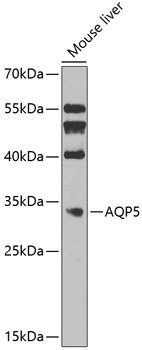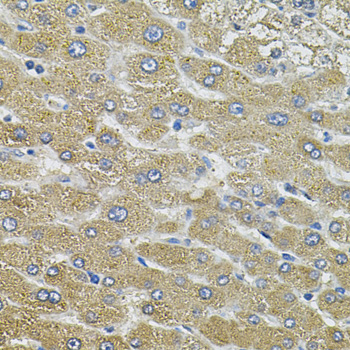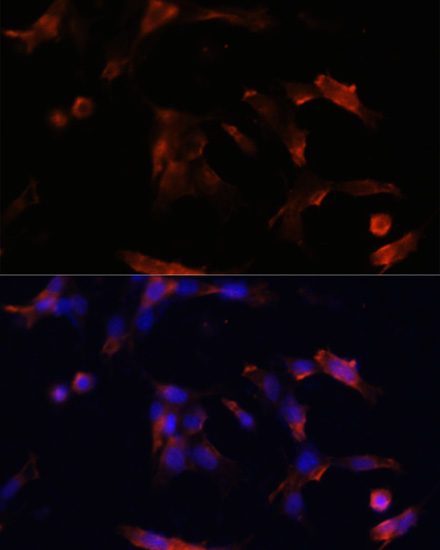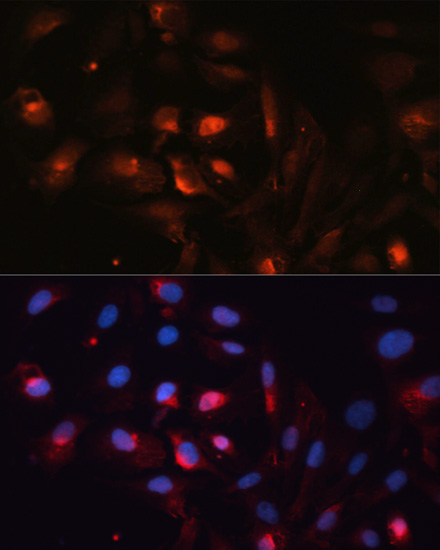-
Product Name
AQP5 Polyclonal Antibody
- Documents
-
Description
Polyclonal antibody to AQP5
-
Tested applications
WB, IHC, IF
-
Species reactivity
Human, Mouse
-
Alternative names
AQP5 antibody; AQP-5 antibody; PPKB antibody; aquaporin-5 antibody
-
Isotype
Rabbit IgG
-
Preparation
Antigen: A synthetic peptide corresponding to a sequence within amino acids 150-250 of human AQP5 (NP_001642.1).
-
Clonality
Polyclonal
-
Formulation
PBS with 0.02% sodium azide, 50% glycerol, pH7.3.
-
Storage instructions
Store at -20℃. Avoid freeze / thaw cycles.
-
Applications
WB 1:500 - 1:2000
IHC 1:50 - 1:200
IF 1:50 - 1:200 -
Validations

Western blot - AQP5 Polyclonal Antibody
Western blot analysis of extracts of mouse liver, using AQP5 Antibody at 1:1000 dilution.Secondary antibody: HRP Goat Anti-Rabbit IgG (H+L) at 1:10000 dilution.Lysates/proteins: 25ug per lane.Blocking buffer: 3% nonfat dry milk in TBST.Detection: ECL Enhanced Kit .Exposure time: 90s.

Immunohistochemistry - AQP5 Polyclonal Antibody
Immunohistochemistry of paraffin-embedded human liver injury using AQP5 antibody (40x lens).

Immunofluorescence - AQP5 Polyclonal Antibody
Immunofluorescence analysis of NIH/3T3 cells using AQP5 antibody at dilution of 1:100. Blue: DAPI for nuclear staining.

Immunofluorescence - AQP5 Polyclonal Antibody
Immunofluorescence analysis of U2OS cells using AQP5 antibody at dilution of 1:100. Blue: DAPI for nuclear staining.
-
Background
Forms a water-specific channel. Implicated in the generation of saliva, tears, and pulmonary secretions. Required for TRPV4 activation by hypotonicity. Together with TRPV4, controls regulatory volume decrease in salivary epithelial cells.
Related Products / Services
Please note: All products are "FOR RESEARCH USE ONLY AND ARE NOT INTENDED FOR DIAGNOSTIC OR THERAPEUTIC USE"
